Introduction
Warsaw University of Technology is one of the leading universities of science and technology in Poland and one of the largest universities of science and technology in Central Europe. It has outstanding achievements in education and research in the fields of engineering and applied sciences, has trained many outstanding engineering and technical talents, and has made important contributions to the development of science and technology in Poland and the world.
Overview
Number of students and faculty: More than 30,000 students, taught by more than 2,000 professors and lecturers, and about 5,000 graduates each year.
Majors: Undergraduate and postgraduate courses are offered, covering almost all science and engineering disciplines, such as civil engineering, space engineering, computer-aided engineering, electronic and computer engineering, computer science, photonic engineering, environmental engineering, electrical engineering, power engineering, global manufacturing engineering and management, etc.
History and establishment time
The origin of Warsaw University of Technology can be traced back to 1826, when the Warsaw Institute of Technology began engineering education. The school was closed in 1831 due to the November Uprising. In 1898, the technical department of the Russian Chamber of Commerce in Warsaw raised funds to open the Nicholas II Polytechnic University. On November 15, 1915, the Warsaw Polytechnic University reopened under the German occupation with classes taught in Polish, and gradually developed into one of the most important engineering science centers in Poland. During the two world wars, the school continued to expand, the discipline construction continued to improve, and its international reputation gradually improved.
School Strength
Faculty: It has 2,453 teaching faculty, including 357 professors, with strong faculty and can provide students with high-quality teaching and guidance.
Scientific Research Results: It has achieved fruitful scientific research results and made important progress in many fields. For example, the research results in materials science, electronic technology, computer science and other fields have a certain influence internationally, providing strong support for Poland's industrial development and scientific and technological innovation.
International Cooperation: It has signed more than 120 international academic and research cooperation agreements with universities, research centers and high-tech industries from 50 countries. Actively participate in international exchange programs, such as the Erasmus Program and the Erasmus World Program, and carry out extensive student exchanges, teacher visits and scientific research cooperation with universities and research institutions around the world.
Institutional Nature
Warsaw University of Technology is a public university.
Educational Philosophy
Adhering to the educational philosophy of "humanities and history are complete, art and technology are equally important", it focuses on cultivating students' comprehensive quality and innovation ability, emphasizing the combination of theory and practice, so that students can master solid professional knowledge while having good humanistic qualities, innovative thinking and practical ability to adapt to the society's diversified needs for engineering and technical talents.
Key laboratories and disciplines
Key laboratories: The school has a number of advanced laboratories and research centers, such as the Materials Science and Engineering Laboratory, the Electronics and Information Technology Laboratory, the Power and Aeronautical Engineering Laboratory, etc., which provide good experimental conditions and research platforms for scientific researchers and students, and promote the development of related disciplines and technological innovation.
Key disciplines: Excellent performance in engineering, computer science, electronic information, materials science and other science and engineering fields. Many disciplines have high reputation and influence in Poland and even internationally, such as computer science and technology, electronic engineering, civil engineering, mechanical engineering and other majors, and have achieved remarkable results in teaching quality, scientific research level and talent training.
Faculty
Warsaw University of Technology has a total of 19 colleges, covering almost all fields of science and technology, including the School of Administration and Social Sciences, the School of Architecture, the School of Chemistry, the School of Electronics and Information Technology, the School of Electrical Engineering, the School of Physics, the School of Geodesy and Cartography, the School of Civil Engineering, the School of Materials Science and Engineering, the School of Manufacturing Engineering, the School of Environmental Engineering, the School of Mathematics and Information Sciences, the School of Power and Aeronautical Engineering, the School of Mechatronics, the School of Automotive and Construction Mechanical Engineering, the School of Transport, the School of Management, the School of Mechanics and Petrochemistry, etc.
Ranking
In 2018, Times Higher Education ranked Warsaw University of Technology 601-800 in the world.
In the QS World University Rankings, the school ranks 527th.
Expenses
Tuition fees vary depending on the major and degree level, and the tuition fees for undergraduate and postgraduate courses are roughly between 2,000 euros and 5,000 euros per year.
Campus
Location: Located in Warsaw, the capital of Poland, Warsaw is the political, economic and cultural center of Poland, providing students with abundant internship, employment and cultural exchange opportunities.
Campus facilities: The campus has modern teaching buildings, laboratories, libraries, student dormitories, canteens, sports facilities, etc., providing students with good learning and living conditions. Among them, the library has a rich collection of books, covering books, journals and research reports in various disciplines, etc., which meets the academic needs of students and teachers. In addition, the school also has its own stadium, two sea vessels and other sports and tourism facilities, providing more choices for students' extracurricular life.
-
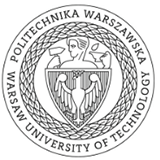
Warsaw University of Technology
-
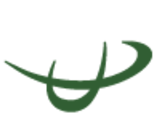
Poznan University of Life Sciences
-
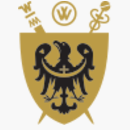
Wroclaw Medical University
-

Nicolaus Copernicus University
-
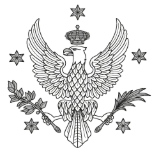
University of Warsaw
-
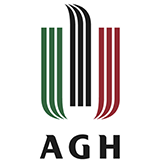
AGH University of Science and Technology
-

Silesian University of Technology
-
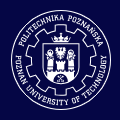
Poznan University of Technology
-

Jagiellonian University
-
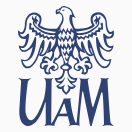
Adam Mickiewicz University
-

Mesoamerican University
-

Istmo University
-

Mariano Galvez University of Guatemala
-

Regional University of Guatemala
-

Galileo University
-

Francisco Marroquín University
-

Rafael Landívar University
-

University of the Valley of Guatemala
-

University of San Carlos of Guatemala
-

Technological Institute of Tlaxcala Plateau
-

Golfo University
-

Technological University of South Sonora
-

Technological University of Huejotzingo
-

Tizimín Institute of Technology
-

Chilpancingo Institute of Technology
